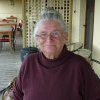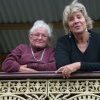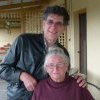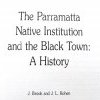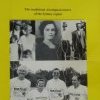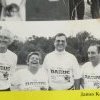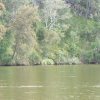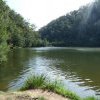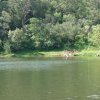1980s
1980
1981
Link Up is founded in Canberra by Coral (Oomera) Edwards and Peter Read. In 1990 it moves office to the Blue Mountains. Video,‘Some deep questions at Link Up’
1982
1983
1984
1985
1986
1987
Robyn Williams living in Liverpool with her extended family, works in establishing the Aboriginal unit at Liverpool College of TAFE. She develops innovative courses for Aboriginal students such as Aboriginal Communication, history, and art. Robyn works with Gandangarra Land Council to create programs such as training of Painters and Decorators, Hospitality and a program to train Aboriginal funeral service assistants. Tharawal Land Council is also involved.
1988
Jim Kohen completes his PhD research having made contact with the Darug people. Kohen’s interest is the distribution of biological resources and the spatial patterning of prehistoric Aboriginal campsites. However, he soon becomes involved in a much wider study of the Darug and their country, which includes culture, genealogy, social structure and language. Several families provide information, such as June Workman nee Tangye and Hilda Tangye nee Webb, relate the story of their ancestor, the Aboriginal "princess", Maria. Research shows that she was the daughter of Yarramundi, also known as Yellowmundi, the "chief" of the Boorooberongal clan from the Richmond area (Kohen 1993). The women know that she married a white man named Robert Lock, the first marriage between an Aboriginal woman and a European in Australia, and that they had ten children, nine of whom survived into adulthood. Maria and her descendants owned land at Plumpton and at Liverpool. Many of the extended family continue to live near Plumpton, Riverstone and Liverpool, while other related families who had moved to the Sackville Aboriginal Reserve, La Perouse, Redfern and Katoomba, now live close to these areas. With this detailed information as a guide, it was possible to confirm the ancestry of the extended Lock family, and to trace other related Darug families. From this beginning, almost 20,000 people have been traced who can claim descent from the Darug, a far cry from John Pilger's 1989 assertion that the Darug "no longer exist".
In the next ten years, Kohen acts as expert witness on behalf of the Darug people for their Native Title claims, and negotiation over Indigenous Land Use Agreement (ILUA) with the NSW government. www.darugweavers.tripod.com/ourblackandwhitefamily/id
Robyn Williams at Liverpool College of TAFE creates the Gandangrra Eel Dreaming Project to train Aboriginal actors to perform at Bents Basin (Gulguer). This performance is to commemorate the 200 years of Aboriginal survival since British settlement. The Dreaming story of Garangatch the giant Eel and Mirrigan the Quoll Cat is performed on a site of significance, Gulguer. Local Koori youth train as performers over a one year TAFE project. Many schools attend the performance and SBS films extracts to screen on national television.












